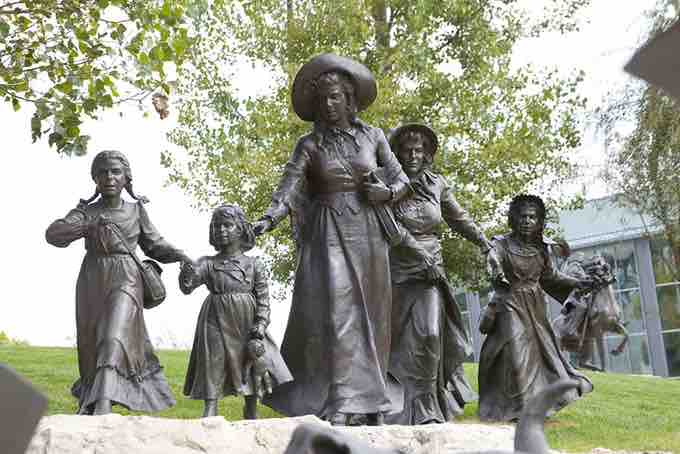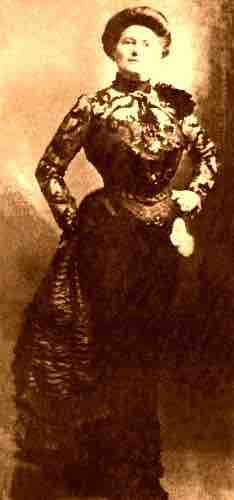Pioneer Women and Families
Family life
On the Great Plains, very few single men attempted to operate a farm or ranch; farmers understood the need for a hard-working wife and numerous children to handle the many chores. This meant women were fully employed in farm-centered labor, including child-rearing, feeding and clothing the family, managing the housework, and feeding the hired hands.
During the early years of settlement, farm women played an integral role in assuring family survival by working outdoors with the men. After a generation or so, women increasingly left the fields, thus redefining their roles within the family. New conveniences such as sewing and washing machines encouraged women to concentrate on domestic roles. The scientific housekeeping movement was promoted across the land by the media and by government extension agents, as well as through county fairs which featured achievements in home cookery and canning, advice columns for women in the farm papers, and home economics courses in the schools.
Although the eastern image of farm life on the prairies emphasizes the isolation of the lonely farmer, in reality, rural folk created a rich social life for themselves. They often sponsored activities that combined work, food, and entertainment such as barn raisings, corn huskings, quilting bees, Grange meetings, and church and school functions. Women organized shared meals and potluck events, as well as extended visits between families.

Monument to pioneer women
This Omaha monument honors pioneer women.
Childhood
Childhood on the American frontier is contested territory among academics. One group of scholars, following the lead of novelists Willa Cather and Laura Ingalls Wilder, argue the rural environment was salubrious to a growing child.
Historians Katherine Harris, in Long Vistas: Women and Families on Colorado Homesteads (1993), and Elliott West, in Growing Up with the Country: Childhood on the Far Western Frontier (1989), write that a rural upbringing allowed children to break loose from urban hierarchies of age and gender, promoted family interdependence, and in the end, produced children who were more self-reliant, mobile, adaptable, responsible, independent, and in touch with nature than their urban or eastern counterparts.
On the other hand, historians Elizabeth Hampsten, in Settlers' Children: Growing Up on the Great Plains (1991), and Lillian Schlissel, with Byrd Gibbens and Elizabeth Hampsten, who wrote Far from Home: Families of the Westward Journey (2002), offer a grim portrait of loneliness, privation, abuse, and demanding physical labor from an early age. Pamela Riney-Kehrberg takes a middle position in Childhood on the Farm: Work, Play, and Coming of Age in the Midwest (2005).
Prostitution
Entrepreneurs set up shops and businesses to cater to miners. The most famous were the houses of prostitution found in mining camps. Prostitution was a growth industry, drawing in sex workers from around the globe, who were pulled in by the money despite the harsh and dangerous working conditions and low prestige. For some, it was a practical decision; others had little choice in the matter. Chinese women, for example, were frequently sold by their families and taken to the camps as prostitutes; they had to send their earnings back to their families in China.

Fannie Porter
Portrait of Fannie Porter, a San Antonio madam, ca. 1900.
In Virginia City, Nevada, a prostitute named Julia Bulette was one of the few who achieved "respectable" status. She nursed victims of an influenza epidemic; this brought her acceptance in the community and the support of the sheriff. The townspeople were shocked when she was murdered in 1867; they gave her a lavish funeral and speedily tried and hanged her assailant.
Until the 1890s, madams predominantly ran the businesses, after which male pimps took over, and the treatment of the women generally declined. The common depiction of the openness of bordellos in western towns shown in films is somewhat realistic, allowing for fantasy elements such as the casting of Hollywood starlets. Gambling and prostitution were central to life in many western towns. Only later—as the female population increased, reformers moved in, and other civilizing influences arrived—did prostitution become less blatant and less common. After a decade or so, the mining towns attracted respectable women who ran boarding houses, organized church societies, worked as laundresses and seamstresses, and strove for independent status.